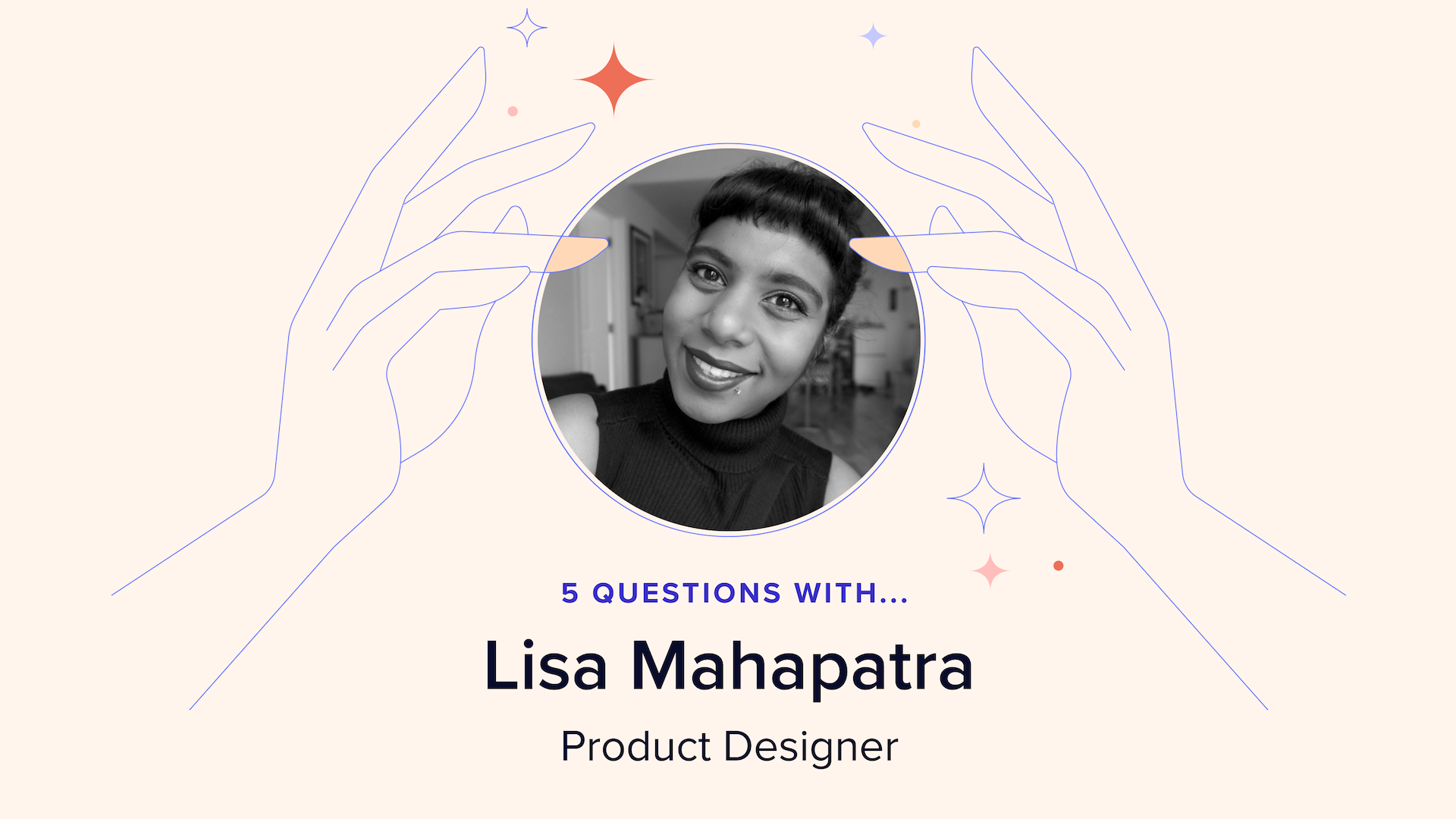5 questions with Lisa Mahapatra, Product Designer at Flatfile

Josh Marks
People Ops
Share to

We're excited to introduce you to Lisa Mahapatra! Lisa is a Product Designer responsible for creating beautiful and engaging experiences for our customers.
Let’s learn more about Lisa!
Q: Why Flatfile? (And what do you do here?)
A: As a Product Designer, I figure out what the product should do and how it should look. Right now, I'm working on the more functional aspects of product design, specifically data tables.
I tweeted that I was looking for a company that wanted a designer obsessed with data tables. David (Boskovic), Flatfile’s CEO, messaged me an hour later and now here I am!
The work I do here is really enjoyable, and I love the extreme ownership. Flatfile lets me design ridiculously complex tables, and I have a high degree of autonomy and trust. Being able to define what you want to work on while having the trust of your colleagues is incredible; there is no going back from that.
Q: We've heard you're obsessed with data visualization and data tables. What sparked your interest in this, and how does that impact your work at Flatfile?
A: I started my career as a journalist and realized very quickly that I like to take my time asking people questions, which doesn't particularly make for great impromptu interviews. I started thinking, ‘I like data and mathematics, so why don’t I just interview data sets?’ I ended up leaning toward data journalism.
At some point, I was getting frustrated that everything I was making only had a concise shelf-life because data visualization is optimized for storytelling, and stories pass away; there's an expiry date. This ultimately pushed me into Product Design; I could use my data storytelling skills to build products with a much longer shelf-life that remained useful and valid.
At my last job at Uber I built a table component for rich data analysis, and it ended up being one of the most internally used design components for internal tooling and for Uber Freight. I wanted to do more of that, and Flatfile is a place where I can. It's very new stuff I've never seen anywhere else.
Q: How has your background as a journalist impacted your ability to tell stories using data?
A: The process of interviewing data gives me empathy for people trying to use data products, but I think it’s more than just journalism. I spend a lot of time trying to get insights out of data. One of the gaps I've often seen with other product designers trying to build data products is that they’ve never actually needed to use data for any reason. One of my constant arguments is: if less is more, think about how much more is more. It sounds like a joke, but it is true. When we’re interacting with the data interface, I want it to have really high information density.
Q: In an interview with Data Visualization Society, you talked about ‘Retrospective Visualization’; saying ‘you don’t know what insights are going to be, and you cannot guide anyone to those insights’. Now, with almost one year at Flatfile under your belt, if you could go back in time and tell Day-One-at-Flatfile-Lisa one thing to prepare her, what would it be?
A: I would write a think piece on a persona Flatfile calls the data owner. It would be about the people uploading and interacting with their data.
I had a lot of preconceived notions about how people like to interact with data, and I hadn't quite realized I was thinking solely about users with a high level of expertise. Working at Flatfile has been super interesting because I have to be able to traverse both extremes.
For example, there could be a nun who only ever uses a spreadsheet app to keep track of her congregants. She doesn't really care about statistics and she doesn't care about the things all expert users might care about. All she cares for is ensuring she’s not discluding any of her congregants from email blasts she might send out.
It’s a fascinating puzzle: how do people who are not super familiar with data products interact with data? How do you intuitively communicate to a person who doesn't understand the concept of mapping values between two schemas? How do you share what you're doing to their data and how are you guiding them through this process correctly?
Ultimately, for the casual data user, Flatfile is top of the class. That's why I believe in this product so much.
Q: You’re famous around these parts for your ‘unique’ AMA questions. Please answer one of your own AMA questions: What is the optimal spot to be in, in a human pyramid, and why?
A: The worst possible spot to be in is in the middle, because not only are you putting your weight on someone, somebody else is putting their weight on you; it seems really stressful. I would rather just be at the bottom and be strong.
So, the optimal spot is the bottom-middle of a short pyramid. If you fall, you don't have far to go, and you just need good strength. You don't need much balance, which is good because I'm clumsy. If you put me on top of someone, I will feel stressed about putting my weight on another human being. Plus, we're all inevitably falling over because I'm not actually that strong. But no one will blame me; they'll say, “Oh, you did an excellent job, you held it together for, like, 15 seconds!”
If you're interested in learning more about how to join Lisa here at Flatfile, check out our job openings on our careers page!
Want to learn more about the Flatfile Data Exchange Platform?
